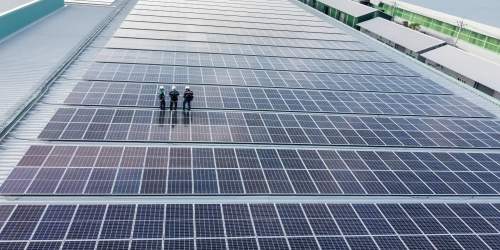
Architects are playing an important role in the fight against climate change. As global temperatures continue to rise, architects are using their skills and knowledge to design buildings and cities that are more sustainable, energy-efficient, and resilient to the effects of climate change. With architecture accounting for nearly 40% of the UK’s carbon emissions, according to RIBA, and the United Nations warning that we only have a matter of years to slow down global warming, the architecture industry is one of many which has been forced to adapt.
One of the ways that architects are supporting the fight against climate change is by designing buildings that are more energy-efficient and built for the long-term. This includes using materials that are sustainable, such as timber or recycled materials, and designing buildings that are well-insulated and ventilated. These are some of the ways architects are supporting the fight for a healthier planet.
Building with timber
Wood has long been used to build structures, but it fell out of fashion in favour of concrete. There’s been a recent resurgence in timber as a construction material because it’s more sustainable, regenerative and innovations such as cross-laminated timber means it’s stronger than ever. One of the primary reasons that we should be building with timber more is that it can sequester a large amount of atmospheric carbon, storing it within the building so it provides climate benefits for as long as it’s standing. Designing and building with timber means carbon-negative buildings that help us meet our net zero targets.
Improving air quality
When it comes to creating sustainable buildings, architects need to take a holistic approach, and that means improving the air quality inside the property as well as outside. High-quality air filters play a central role in removing harmful particles from the air, reducing airborne diseases and minimising energy consumption. We’ve come to understand the importance of outdoor air quality, from smog-filled cities to exhaust fumes from vehicles, but we pay less attention to the air quality inside buildings. Architects and designers are uniquely positioned to ensure that our surrounding environments, indoor and out, are healthier and eliminate the threat that pollution poses to our health and that of the environment.
Retrofitting structures
Retrofitting buildings is one of the most accessible ways that architects can improve the sustainability and eco-efficiency of a building. This work seeks to improve the thermal performance of a building, whether it’s updating the heating or cooling systems, replacing damaged materials with energy-efficient alternatives or installing renewable energy systems to reduce reliance on fossil fuels. Demolition is a hugely damaging industry that releases a lot of emissions, so in prioritising the improvement of a structure rather than knocking it down, architects are reducing carbon emissions and creating greener buildings in one.
Meeting Passivhaus Standards
Since it was first introduced in the ‘90s, the Passivhaus energy performance standards have become the best-known in the industry and one of the most effective ways to develop sustainable architecture. Now, with a push for greener buildings, it’s something designers are looking to do more and more. The standard awarded by the Passivhaus Trust ensures that buildings have high levels of insulation and are air-tight, so that they rely less on artificial heating and cooling. Passivhaus constructions are far more energy efficient and cheaper to run as a result, as well as being better for the planet.
Regenerative Architecture
Regenerative or restorative architecture is the process of designing a building that has a positive impact on the environment. These buildings go above and beyond simply mitigating negative consequences of construction and actively reverses damage caused to the environment. For example, The Sahara Forest Project in Qatar is a seawater-cooled greenhouse which harvests fresh water in the desert and uses excess water to water the surrounding landscape. Buildings such as this are treated as a cog in a larger system, producing and sharing resources such as energy, water or food.
Choosing Carbon-Smart Materials
Steel and concrete manufacturing is a damaging sector and results in a massive impact on global warming. What’s more, once those materials are used in a building, it embodies that carbon. Reducing carbon is a critical strategy that will help the UK, and other countries around the world, to meet large-scale carbon emission reduction targets. In new construction, that means being smarter about the materials we build with and moving away from high-emitting materials such as steel, concrete and foam insulation. From hemp-crete and bamboo to straw insulation and compressed straw building blocks, architects are thinking outside the box to find unique materials that deliver on performance without the damaging effects.
Creating green roofs
In a densely built, urban area, finding pockets of greenery can be tough. Architects are working around this problem and incorporating them into a building’s design through green roofs, which take in carbon dioxide and release oxygen to purify the air, and reduce pollution and smog. These roofing creations, along with vertical forests, are a haven for wildlife and insects, and filter out dust and CO2, creating a healthier environment for all as well as being more beautiful to look at.
Sourcing local materials
Where materials are sourced matters. From where they’re manufactured to the way they’re used in construction plays a crucial role in the environmental impact of a project, so architects need to be sourcing locally wherever possible to reduce the carbon footprint of a structure and bring transportation emissions down. Reducing the distances from material manufacturing and use on site can make a big dent in the footprint of a project and the sustainability of the building overall.
Consumers and businesses alike are recognising the importance of sustainability in developments and architects are playing an important role in the fight against climate change. By designing sustainable buildings and advocating for the use of innovative materials and solutions, they are helping to create a more resilient future and a more biodiverse planet.





























